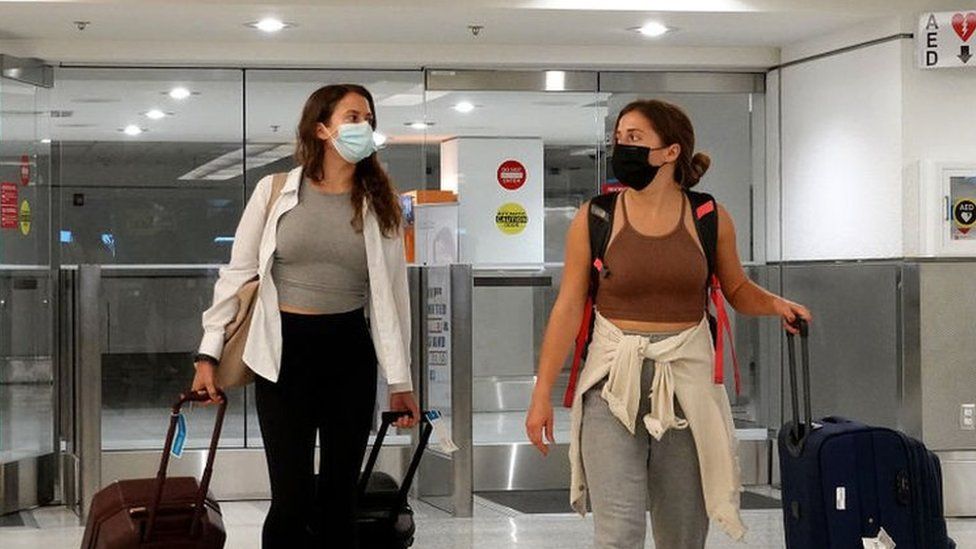This article is more than
3 year oldCovid-19 lab leak evidence ‘overwhelming’, experts say
There is now “overwhelming” evidence that Covid-19 was created in a Wuhan lab, according top scientists, who say the chance that SARS-CoV-2 emerged naturally in animals in China is “one in a million”.
Steven Quay and Richard Muller, who earlier this month published an explosive opinion piece in The Wall Street Journal laying out the scientific case for the lab-leak theory, have told an online conference that the world risks a biological world war if so-called “gain of function” research is not shut down immediately.
Dr Quay, chief executive of pharmaceutical company Atossa Therapeutics, told the Washington DC-based Hudson Institute that advances in virus and vaccine research had “opened the floodgates where you can have a bioweapon in the morning and have a vaccine in the afternoon”, The Australian first reported.
In his presentation, Dr Quay said a key piece of evidence pointing to a lab leak was the fact that when the virus first appeared, it was already extremely contagious, unlike other viruses which can be observed evolving as they spread through a population until the most contagious form dominates.
“Covid-19 wasn’t smouldering in the community before the pandemic began, as was observed with previous coronavirus epidemics,” he said.
Based on comparison with the SARS-CoV-1 and MERS epidemics, Dr Quay said “the probability that a community-acquired zoonosis” would produce the results seen in the early spread of SARS-CoV-2 was “literally one in a million”.
Professor Muller, an astrophysicist from the University of California, Berkeley, said there were concerns scientists would be “black-listed and labelled an enemy of China” if they pursued the “lab leak” theory.
“That meant that China was exercising control over US freedom of speech,” he said. “US scientists didn’t even want to discuss the issue for fear of what China would do. That is a very frightening conversation.”
The comments came as a Harvard scientist admitted that she and her colleagues were reluctant to publicly support the lab leak theory earlier out of hatred for former US president Donald Trump.
“At the time, it was scarier to be associated with Trump and to become a tool for racists, so people didn’t want to publicly call for an investigation into lab origins,” Alina Chan, who was one of 18 scientists who published a letter in the journal Science last month calling for more in-depth investigation into the virus’ origin, told NBC.

Getty ImagesSource:Getty Images
RELATED: China’s outrageous new Covid-19 claim
Lab leak theory gains traction
The lab leak theory, which was espoused by Mr Trump and others in his administration including former Secretary of State Mike Pompeo, has gained renewed traction in recent weeks as fresh circumstantial evidence has emerged.
The Wall Street Journal revealed last month that three researchers at the Wuhan Institute of Virology fell ill in November 2019, and video evidence obtained by Sky News this week proved live bats were kept in cages at the lab, contradicting World Health Organisation investigator Peter Daszak who had dismissed the claim as a “conspiracy theory”.
The WHO’s investigation into the origins of Covid-19 concluded in February that it was “extremely unlikely” the virus came from a lab.
Doubts about the quality of the findings led the US government to last month instruct its intelligence agencies to conduct a fresh 90-day inquiry, with US President Joe Biden and other world leaders calling for further investigations.
In the US, the death toll from Covid-19 this week passed 600,000. Globally the estimated death toll is around 3.8 million.
Writing in The Wall Street Journal this month, Dr Quay and Prof Muller explained that the “genetic fingerprint” of SARS-CoV-2 was the most damning indication it had been created in a lab.
They pointed to a specific amino acid sequence known as CGG-CGG, or double CGG, that is commonly spliced into viruses by researchers in order to increase their lethality.
“In fact, in the entire class of coronaviruses that includes CoV-2, the CGG-CGG combination has never been found naturally,” they wrote.
“Now the damning fact. It was this exact sequence that appears in CoV-2. Proponents of zoonotic origin must explain why the novel coronavirus, when it mutated or recombined, happened to pick its least favourite combination, the double CGG. Why did it replicate the choice the lab’s gain-of-function researchers would have made?”

RELATED: China blocking Taiwan’s access to vaccines
Other scientists still sceptical
But Professor Dominic Dwyer, director of public health pathology in NSW, who was part of the 17-strong international team of experts on the WHO team in January, remains sceptical of the lab leak theory.
“The lab leak sits there, but you need some sort of evidence to take it further,” he told The Sydney Morning Herald this month.
Prof Dwyer said the key flaw in the hypothesis was that there was no evidence the Wuhan Institute of Virology had the SARS-CoV-2 virus before the pandemic – and that it was unlikely they would have had the virus and not published a paper about it.
“They are a pretty prominent research institute,” he said.
“They publish a lot of very good papers and have collaborations with people around the world. If they had it, there was no reason to hide it from a scientific or intellectual point of view.”
Speaking to SBS this week, he again argued animal-to-human transmission was the most likely origin and was a “tried and true process”.
“Plenty of other viruses have gone down this pathway before, including the original SARS and MERS, which are coronaviruses that have come across into humans,” he said.
“Nearly all human viruses identified in the last 40 or 50 years have come from animals in one form or another, and bats are a major contributor. So, there’s a history there and it’s well documented.”
Newer articles
Tumultuous Trump trial day ends with 12 jurors, 1 alternate selected
Israel Launches Retaliatory Strike Against Iran
Russia's meat grinder soldiers - 50,000 confirmed dead
Apple deletes WhatsApp, Threads from China app store on orders from Beijing
Narendra Modi: India’s popular but controversial leader seeking a transformative third term
Kiev demands Israel-style security guarantees
‘URANIUM’: Terrifying detail about Israel’s strike on Iran emerges
More than a dozen killed in Ukraine after Russian strike on apartment block
Defying Niger exit order leaves U.S. troops vulnerable, whistleblower says




